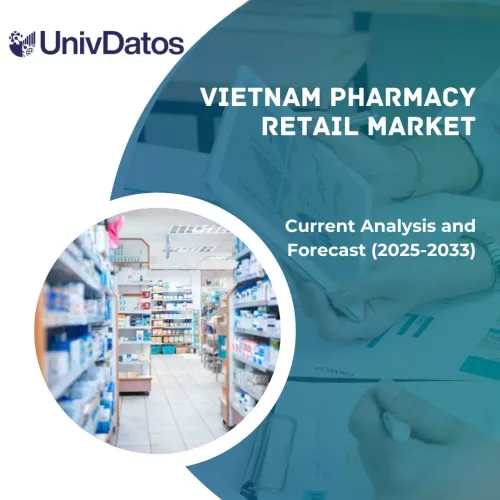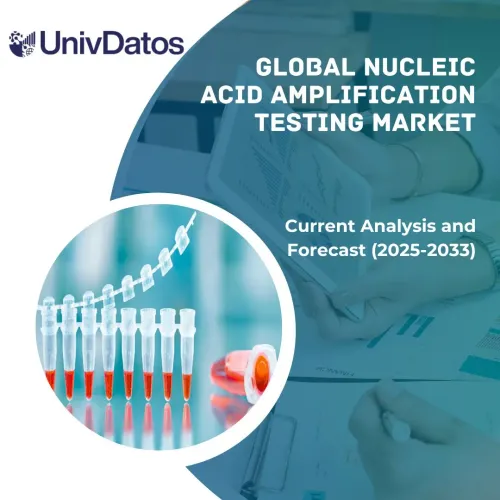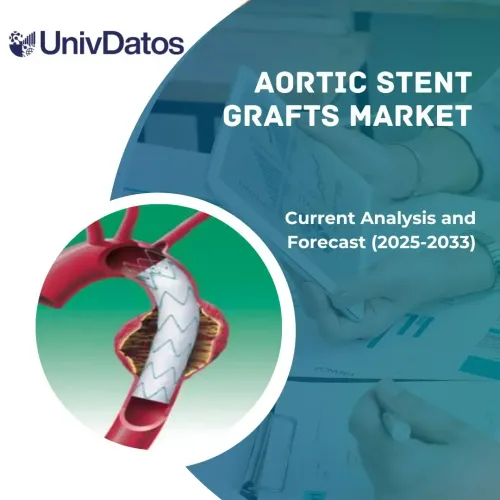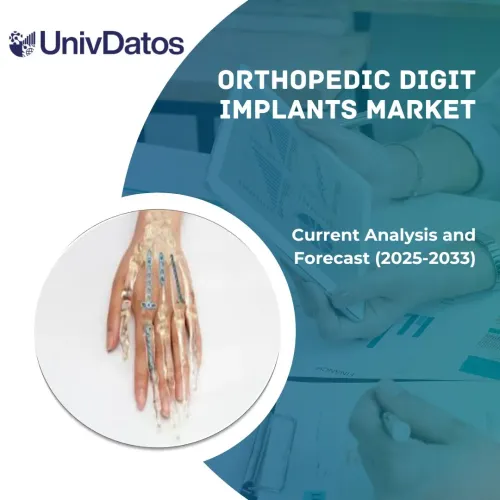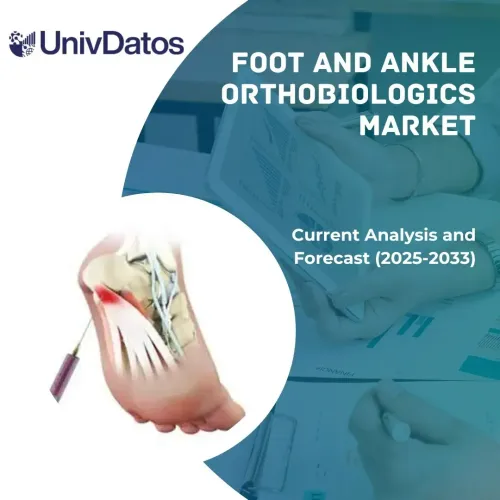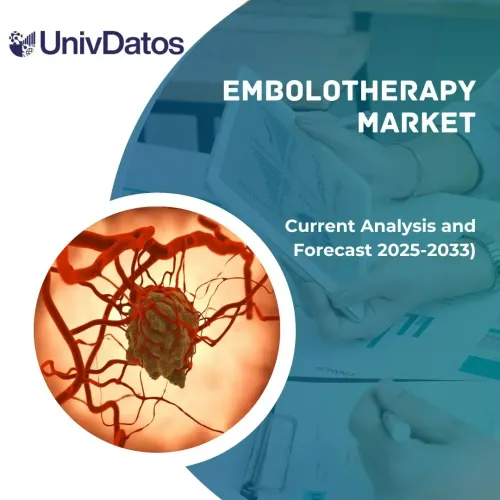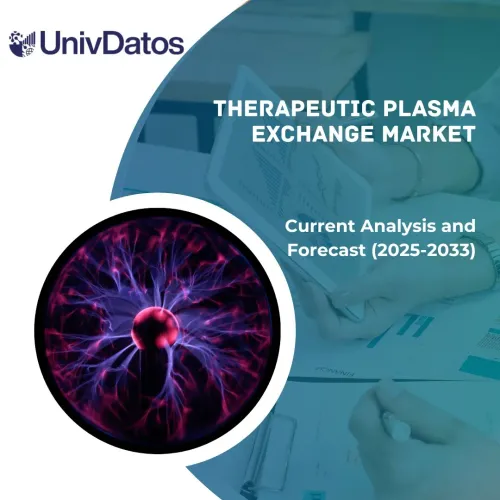- Home
- Chi siamo
- Settore
- Servizi
- Lettura
- Contattaci
Mercato della dermatologia pediatrica: analisi attuale e previsioni (2022-2028)
Enfasi sulla Classe Farmacologica (Anti-infettivi, Corticosteroidi, Anti-Acne, Inibitori della Calcineurina, Retinoidi e Altri); Applicazione (Alopecia, Eritromelalgia, Psoriasi, Dermatite Atopica e Altre); Utente Finale (Ospedali, Cliniche, Centri Estetici e Altri); e Regione/Paese
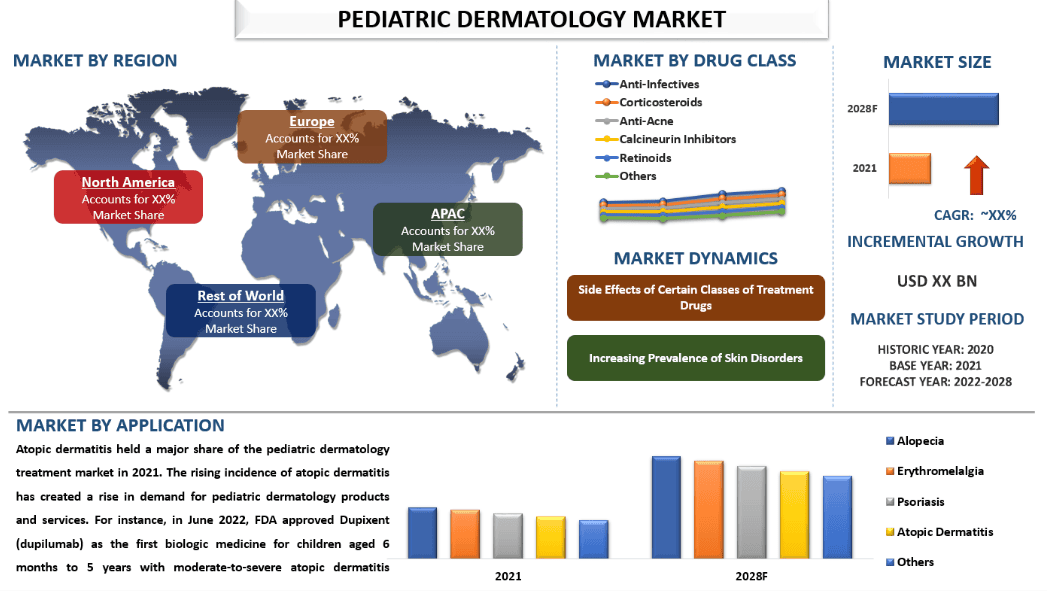
Il mercato del trattamento della dermatologia pediatrica è stato valutato a USD XX miliardi e si prevede che crescerà con un forte CAGR di circa il 7% durante il periodo di previsione (2020-2028) a causa della crescente domanda di trattamenti minimamente invasivi per le condizioni della pelle pediatriche. Inoltre, si prevede che l'aumento degli investimenti in azioni di ricerca e sviluppo mirate all'espansione di nuovi trattamenti di dermatologia pediatrica stimolerà la crescita del mercato. Pertanto, la presenza di diversi importanti attori nella regione che sono attivamente impegnati nello sviluppo di nuove opzioni di trattamento per le condizioni di dermatologia pediatrica approvate dalla U.S. Food and Drug Administration (FDA) sono alcuni dei principali motori per la maggiore penetrazione dei dispositivi di trattamento di dermatologia pediatrica tra i genitori, soprattutto nei paesi sviluppati e in via di sviluppo. Ad esempio, nel giugno 2019, Novartis ha annunciato che la U.S. Food and Drug Administration (FDA) ha approvato Cosentyx per il trattamento della psoriasi a placche da moderata a grave nei pazienti pediatrici di età superiore ai sei anni candidati alla terapia sistemica o alla fototerapia1. Questa è la prima approvazione per Cosentyx in una popolazione pediatrica negli Stati Uniti.
Alcuni dei principali attori che operano sul mercato includono Novartis AG; Amgen Inc.; AbbVie Inc.; Almirall S.A; Bausch Health Companies Inc.; Pfizer Inc.; Johnson & Johnson Services, Inc.; Merck & Co., Inc.; Sanofi S.A.; Bristol Myers Squibb Company. Diverse M&A insieme a partnership sono state intraprese da questi attori per facilitare i clienti con prodotti/tecnologie hi-tech e innovativi.
Approfondimenti presentati nel rapporto
“Tra le classi di farmaci, il segmento degli elettrodomestici intelligenti ha detenuto una quota dominante del mercato nel 2021”
In base alla classe di farmaci, il mercato è segmentato in antinfettivi, corticosteroidi, anti-acne, inibitori della calcineurina, retinoidi e altri. Tra questi, si prevede che il segmento dei corticosteroidi crescerà con un CAGR significativo durante il periodo di previsione. Ciò è dovuto principalmente alla sua efficacia nel trattamento dell'infiammazione della pelle nei giovani ed è generalmente accessibile in gel, creme per la pelle e lozioni, che possono essere applicati senza sforzo sulla pelle dei bambini.
“Tra le applicazioni, la dermatite atopica ha detenuto una quota importante del mercato nel 2021”
Per applicazione, il mercato è segmentato in alopecia, eritromelalgia, psoriasi, dermatite atopica e altri. Tra questi, la dermatite atopica ha detenuto una quota importante del mercato del trattamento della dermatologia pediatrica nel 2021. L'aumento dell'incidenza della dermatite atopica ha creato un aumento della domanda di prodotti e servizi di dermatologia pediatrica. Ad esempio, nel giugno 2022, la FDA ha approvato Dupixent (dupilumab) come il primo farmaco biologico per bambini dai 6 mesi ai 5 anni con dermatite atopica da moderata a grave.
“Si prevede che l'Asia crescerà al CAGR più alto durante il periodo previsto”
Si prevede che l'Asia-Pacifico crescerà al CAGR più alto durante il periodo previsto a causa della crescente incidenza di condizioni della pelle come la dermatite atopica, l'eczema e l'acne che stanno diventando più comuni nei bambini nella regione Asia-Pacifico a causa dell'aumento dell'inquinamento atmosferico e dei cambiamenti negli stili di vita. Inoltre, il gran numero di bambini che vivono nella regione Asia-Pacifico indica una significativa opportunità di mercato per i trattamenti dermatologici per bambini. Inoltre, durante il periodo di previsione si è registrata una maggiore consapevolezza tra genitori e operatori sanitari della salute della pelle, il che guiderà la domanda di trattamenti di dermatologia pediatrica.
Copertura del rapporto sul mercato del trattamento della dermatologia pediatrica
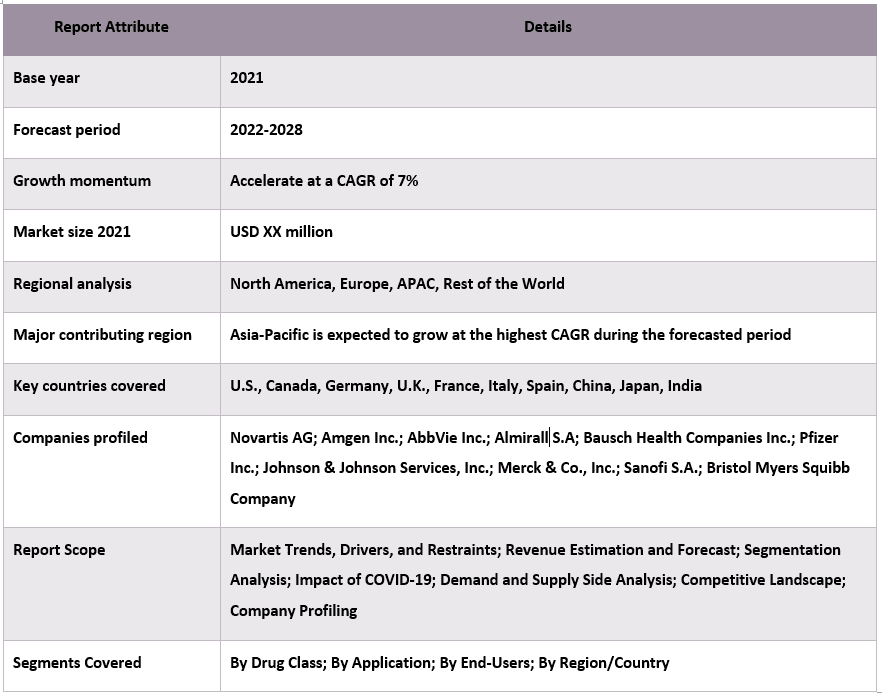
Motivi per acquistare questo rapporto:
- Lo studio include analisi di dimensionamento e previsione del mercato convalidate da esperti chiave del settore autenticati.
- Il rapporto presenta una rapida panoramica delle prestazioni complessive del settore a colpo d'occhio.
- Il rapporto copre un'analisi approfondita dei principali pari del settore con un focus primario sulle principali finanze aziendali, portafogli di prodotti, strategie di espansione e sviluppi recenti.
- Esame dettagliato dei driver, dei vincoli, delle tendenze chiave e delle opportunità prevalenti nel settore.
- Lo studio copre in modo completo il mercato in diversi segmenti.
- Analisi approfondita a livello regionale del settore.
Opzioni di personalizzazione:
Il mercato globale del trattamento della dermatologia pediatrica può essere ulteriormente personalizzato in base alle esigenze o a qualsiasi altro segmento di mercato. Oltre a questo, UMI comprende che potresti avere le tue esigenze aziendali, quindi sentiti libero di metterti in contatto con noi per ottenere un rapporto che si adatti completamente alle tue esigenze.
Indice
Metodologia di ricerca per l'analisi del mercato del trattamento della dermatologia pediatrica (2022-2028)
L'analisi del mercato storico, la stima del mercato attuale e la previsione del mercato futuro del mercato globale del trattamento della dermatologia pediatrica sono stati i tre passaggi principali intrapresi per creare e analizzare l'adozione del trattamento della dermatologia pediatrica nelle principali regioni a livello globale. È stata condotta un'esaustiva ricerca secondaria per raccogliere i dati storici di mercato e stimare le dimensioni del mercato attuale. In secondo luogo, per convalidare queste intuizioni, sono stati presi in considerazione numerosi risultati e presupposti. Inoltre, sono state condotte anche esaustive interviste primarie con esperti del settore lungo tutta la catena del valore del mercato globale del trattamento della dermatologia pediatrica. Dopo l'assunzione e la convalida dei dati di mercato attraverso interviste primarie, abbiamo impiegato un approccio top-down/bottom-up per prevedere le dimensioni complete del mercato. Successivamente, sono stati adottati metodi di suddivisione del mercato e di triangolazione dei dati per stimare e analizzare le dimensioni del mercato dei segmenti e dei sottosegmenti del settore di pertinenza. La metodologia dettagliata è spiegata di seguito:
Analisi delle dimensioni storiche del mercato
Passaggio 1: studio approfondito delle fonti secondarie:
È stato condotto uno studio secondario dettagliato per ottenere le dimensioni storiche del mercato del trattamento della dermatologia pediatrica attraverso fonti interne dell'azienda come relazioni annuali e bilanci, presentazioni sulle prestazioni, comunicati stampa, ecc., e fonti esterne tra cui riviste, notizie e articoli, pubblicazioni governative, pubblicazioni della concorrenza, relazioni di settore, database di terze parti e altre pubblicazioni credibili.
Passaggio 2: segmentazione del mercato:
Dopo aver ottenuto le dimensioni storiche del mercato del trattamento della dermatologia pediatrica, abbiamo condotto un'analisi secondaria dettagliata per raccogliere informazioni storiche sul mercato e quote per diversi segmenti e sottosegmenti per le principali regioni. I principali segmenti inclusi nel report sono la classe di farmaci, l'applicazione e gli utenti finali. Sono state inoltre condotte analisi a livello nazionale per valutare l'adozione complessiva dei modelli di test in quella regione.
Passaggio 3: analisi dei fattori:
Dopo aver acquisito le dimensioni storiche del mercato di diversi segmenti e sottosegmenti, abbiamo condotto un'analisi dei fattori dettagliata per stimare le dimensioni attuali del mercato del trattamento della dermatologia pediatrica. Inoltre, abbiamo condotto un'analisi dei fattori utilizzando variabili dipendenti e indipendenti come la classe di farmaci, l'applicazione e gli utenti finali del mercato del trattamento della dermatologia pediatrica. È stata condotta un'analisi approfondita per gli scenari lato domanda e lato offerta, considerando le principali partnership, fusioni e acquisizioni, espansioni aziendali e lanci di prodotti nel settore del mercato del trattamento della dermatologia pediatrica in tutto il mondo.
Stima e previsione delle dimensioni attuali del mercato
Dimensionamento del mercato attuale: sulla base di informazioni utili dai 3 passaggi precedenti, siamo giunti alle dimensioni attuali del mercato, ai principali attori nel mercato globale del trattamento della dermatologia pediatrica e alle quote di mercato dei segmenti. Tutte le suddivisioni percentuali richieste e le suddivisioni del mercato sono state determinate utilizzando l'approccio secondario sopra menzionato e sono state verificate attraverso interviste primarie.
Stima e previsione: per la stima e la previsione del mercato, sono stati assegnati pesi a diversi fattori, inclusi driver e tendenze, vincoli e opportunità disponibili per le parti interessate. Dopo aver analizzato questi fattori, sono state applicate tecniche di previsione pertinenti, ovvero l'approccio top-down/bottom-up, per arrivare alla previsione di mercato per il 2028 per diversi segmenti e sottosegmenti nei principali mercati a livello globale. La metodologia di ricerca adottata per stimare le dimensioni del mercato comprende:
- Le dimensioni del mercato del settore, in termini di fatturato (USD) e il tasso di adozione del mercato del trattamento della dermatologia pediatrica nei principali mercati a livello nazionale
- Tutte le quote percentuali, le suddivisioni e le ripartizioni dei segmenti di mercato e dei sottosegmenti
- I principali attori nel mercato globale del trattamento della dermatologia pediatrica in termini di prodotti offerti. Inoltre, le strategie di crescita adottate da questi attori per competere nel mercato in rapida crescita
Convalida delle dimensioni e della quota di mercato
Ricerca primaria: sono state condotte interviste approfondite con i Key Opinion Leader (KOL), tra cui Top Level Executives (CXO/VP, Responsabile vendite, Responsabile marketing, Responsabile operativo, Responsabile regionale, Responsabile nazionale, ecc.) nelle principali regioni. I risultati della ricerca primaria sono stati quindi riassunti ed è stata eseguita un'analisi statistica per dimostrare l'ipotesi dichiarata. I risultati della ricerca primaria sono stati consolidati con i risultati secondari, trasformando così le informazioni in informazioni utili.
Suddivisione dei partecipanti primari nelle diverse regioni
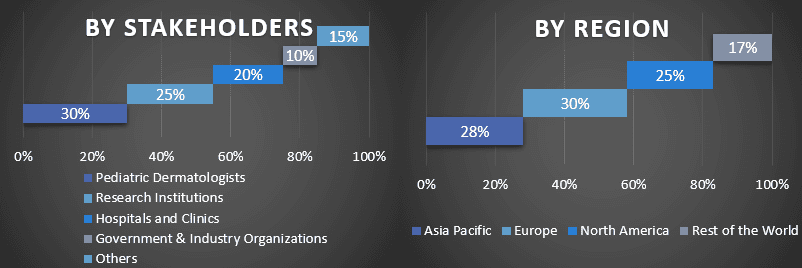
Ingegneria del mercato
È stata impiegata la tecnica di triangolazione dei dati per completare la stima complessiva del mercato e per arrivare a numeri statistici precisi per ciascun segmento e sottosegmento del mercato globale del trattamento della dermatologia pediatrica. i dati sono stati suddivisi in diversi segmenti e sottosegmenti dopo aver studiato vari parametri e tendenze nelle aree della classe di farmaci, dell'applicazione e degli utenti finali nel mercato globale del trattamento della dermatologia pediatrica.
L'obiettivo principale dello studio sul mercato globale del trattamento della dermatologia pediatrica
Le tendenze di mercato attuali e future del mercato globale del trattamento della dermatologia pediatrica sono state individuate nello studio. Gli investitori possono ottenere informazioni strategiche per basare la propria discrezione per gli investimenti sull'analisi qualitativa e quantitativa eseguita nello studio. Le tendenze di mercato attuali e future hanno determinato l'attrattiva complessiva del mercato a livello regionale, fornendo una piattaforma per il partecipante industriale per sfruttare il mercato non sfruttato per beneficiare di un vantaggio di first-mover. Altri obiettivi quantitativi degli studi includono:
- Analizzare le dimensioni del mercato attuale e previsto del mercato del trattamento della dermatologia pediatrica in termini di valore (USD). Inoltre, analizzare le dimensioni del mercato attuale e previsto di diversi segmenti e sottosegmenti
- I segmenti nello studio includono aree della classe di farmaci, dell'applicazione e degli utenti finali
- Definire e analizzare il quadro normativo per l'industria del trattamento della dermatologia pediatrica
- Analizzare la catena del valore coinvolta con la presenza di vari intermediari, insieme all'analisi dei comportamenti dei clienti e della concorrenza del settore
- Analizzare le dimensioni del mercato attuale e previsto del mercato del trattamento della dermatologia pediatrica per la regione principale
- I principali paesi delle regioni studiati nel report includono Asia Pacifico, Europa, Nord America e il resto del mondo
- Profili aziendali del mercato del trattamento della dermatologia pediatrica e le strategie di crescita adottate dagli attori del mercato per sostenersi nel mercato in rapida crescita
- Analisi approfondita a livello regionale del settore
Correlati Report
I clienti che hanno acquistato questo articolo hanno acquistato anche

